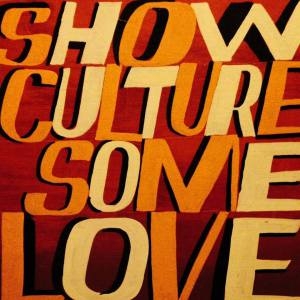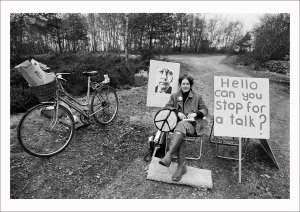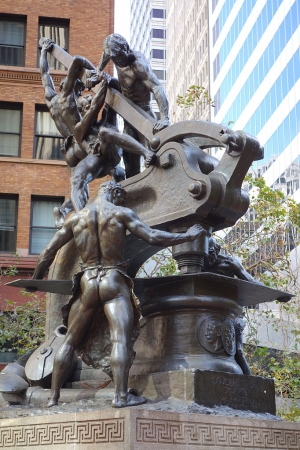Wars rage in the Middle East. The US and its allies pursue their policies of economic and military aggression, regime change, and the deliberate fomenting of chaos, instability and hardship. Refugees, asylum seekers and economic migrants are forced to flee, towards the richer countries of Europe, whose wealth has been built on the imperialist exploitation of the rest of the world. There they are met by steel fences, police with dogs, endless paperwork, squabbling politicians and suspicious populations. Random atrocities are committed against civilians, on the ground and in the air, in Paris, Damascus, Jerusalem and Beirut.
That is the world in which we are living, and it is a world familiar to Amir Darwish. Amir was born in Syria in 1979 and came to the UK during the second Gulf War. His poetry has been published in the USA, Pakistan, Finland, Morocco and Mexico.
His recent book of poetry, 'Don’t Forget the Couscous' is in the words of the publisher, 'a book of poetry about exile and home. It is a love-song to the Arab world – Syria, Kurdistan, Morocco and Palestine. It is a memoir of the failed Arab Spring and the civil war that has turned Syria into a ‘fountain of blood’, as Darwish puts it in one of the poems. It’s a bitter account of the demonization of Islam in the West, and the violent interference of the West in the Islamic world. It is about being a Muslim and not a terrorist.'
Here are some poems from the collection, showing Darwish's poetic skills as a light, musical lyricist; as an honest, informative and insightful political commentator; and as a skilled ironist and satirist, capable of both sharpness and warmth.
Sorry!
An apology from Muslims (or those perceived to be Muslims) to humanity
We are sorry for everything
That we have caused humanity to suffer from.
Sorry for algebra and the letter X.
Sorry for all the words we throw at you;
Amber, candy, chemistry, cotton, giraffe, hazard,
Jar, jasmine, jumper, lemon, lime, lilac,
Oranges, sofa, scarlet, spinach,
Talisman, tangerine, tariff, traffic, tulips,
Mattress (yes, mattress) and the massage you enjoy on it:
We are sorry for all of these.
Sorry that we replaced alcohol with coffee for Enlightenment philosophers.
Speaking of hot drinks,
We are sorry for the cappuccino the Turks brought over.
Sorry for the black Arabian race horses,
For the clock,
Maths,
Parachutes.
Abdul in the US is sorry for what so and so did;
He does not know him but he is sorry anyway.
Sorry that we accompanied Columbus on his journey to the States.
And sorry for the Arab man with him
Who was the first to touch the shore and shout ‘Honolulu’
And named the place after him.
Sorry for the architecture in Spain and the Al Hambra palace there.
We apologise for churches in Seville
With their stars of David at the top that we built with our hands.
We say sorry for every number you use in your daily life from the 0 to the trillion.
Even Adnan the Yezidi (mistaken for a Muslim)
Is sorry for the actions of Abu whatever who beheads people in Syria.
Sorry for the mercury chloride that heals wounds,
Please give us some –
Because the guilt of initiating all of the above
Gives us a wound as big as this earth.
Sorry for the guitar that was played by Moriscos in Spain
To ease their pain when they were kicked out of their homes.
Sorry for the hookah as you suck on its lips
And gaze into the moon hearing the Arabian Nay.
Sorry for cryptanalysis and the ability to analyse information systems,
To think what is the heart of the heart of the heart and bring it to the world.
Sorry for painting Grenada white to evade social hierarchy.
Sorry for the stories inThe Arabian Nights.
Every time we see a star, we remember to be sorry for Astronomy,
We are sorry that Mo Farah claimed asylum here
And went to become the British champion of the world.
Sorry for non-representational art,
Pattern and surface decoration.
We are sorry for all the food we brought over:
From tuna to chicken tikka masala,
Hummus,
Falafel,
Apricot,
Doner kebab
Right up to the shawarma roll.
And don’t forget the couscous.
If we forget to apologise for something, never mind,
We are sorry for it without even knowing it.
Most of all we are sorry for Rumi’s love poems,
And we desperately echo one of them to you:
Oh Beloved,
Take me.
Liberate my soul.
Fill me with your love and
Release me from the two worlds.
If I set my heart on anything but you
Let that fire burn me from inside.
Oh Beloved,
Take away what I want.
Take away what I do.
Take away what I need.
Take away everything
That takes me away from you.
Please forgive us.
We are sorry and cannot be sorry enough today.
Palestine
Palestine is a rose that rose
To refresh the air as it enters the nose.
There must be a light at the end of this tunnel
There must be a light at the end of this tunnel
At a point where
So many eyes look into darkness
Cut through a bone and
Shine it.
There will be a creature there
A strange one
With no hands
No lips
No arms
No ears
No body
And only eyes
Eyes and soul.
That being will find a light from within you
And strike it out to the world.
Over there
In that place
The river of sadness dries
Melancholy waves hush and
The Sorrow garden
Reflects an Arabian desert moonlight
Shining the universe.
There
You sit with your hand back and forth
Playing the water of a Damascus fountain.
I interviewed Amir about his past, his poetics and his politics. Amir asked me to make it clear that he is not speaking on behalf of all poets, nor does he intend offer advice to others on what to think or write. His views are his and his alone.
Can you tell us a bit about yourself to start with, please?
I am a British/Syrian poet of Kurdish origin, born in Aleppo in 1979, and I came to the UK in 2003. I started writing at the age of 16 or 17. My poetry has now been published in the USA, Pakistan, Finland, Morocco and Mexico and in the anthology Break-Out. I recently completed an MA in International Studies at the University of Durham, and prior to that I gained a BA in history from Teesside University.
The book you've chosen the poems from, 'Don't Forget The Couscous' is a collection of poetry about exile and home, love and loss. My next book will be an autobiographical work, 'From Aleppo Without Love', touching on themes of pain and agony felt by myself and my sisters, Shaza, Rana and Layla.
Can you tell us something about your approach to writing, about why and how you write?
As a child and as a teenager, I experienced oppression both in the private and public spheres. I was both a subject and witness to violent acts for several years, and those memories have inspired my writing. My writing has become an outlet, to channel some awful experiences and redeem their pain.
Inspirational moments, for me, often arrive while on a journey. At stations and airports, poems are born, and then later on rise and mature, in quietness. The first stage of the process, the poem's conception, is more important than the second. I am constantly ready with pen, paper, phone and laptop, to put down words and thoughts when on the road. I am a writer who starts big and then goes small, small, small until the word is loud and clear. Nonetheless, the increase and decrease of thoughts is sometimes done as an experiment. Clarity, a sense of simplicity, and fluency are continuous aims.
How do you find living in Britain, on Teeside?
Living on Teesside gave me a good start on the poetry road here in England. The poetry scene is lively and dynamic, with new faces often coming to light. Particularly through the MA Creative Writing course at Teesside University, led by two local poets, Andy Willoughby and Bob Beagrie.
I appreciate what Britain offers in terms of safety, shelter and an atmosphere to write fearlessly. These aspects are particularly relevant to my next work, “From Aleppo without Love” which is scheduled for publication in 2017. Not many places on earth are available to write such work bravely and feel safe. Britain is one.
Can you give us your thoughts on the current refugee crisis, and the troubles in Syria and the Middle East?
A poet is not a politician for sure, but more someone who can guide public opinion so that politicians are directed onto certain paths. When a poet tries to become a politician, there is a danger for him/her of restricting the imaginative self to intellectual certainties. Nothing kills creativity at the cradle more than adherence to one sole, specific view. As a poet, I try to stay free of specific political thought as much as possible, like a bird who visits nests but never resides forever in one of them. Not sure if I do that successfully! I do perhaps still exhibit partisan views, like everyone I have certain biases.
As for what goes on now in the region, I still feel traumatised by what went on, what goes on now and what might happen next. I don't have the ability to take up a pen and write properly on recent events. Maybe the next generation can. Possibly that is why some of my attempts to write poems about the refugee crisis are weak, powerless and tend to fail as poems. Humanity, and here I mean worldwide not specific governments or locations, will need to examine itself after such a crisis. The current Syrian refugee crisis is the largest since WWII, who would have thought the world would see such a massive refugee crisis?
What other poets do you admire, and would recommend to our readers?
Humanist poets in the Middle East are now necessary more than ever. The Syrian poet Adunis is a great example, tightly embracing the humanist ideal when the Arab Spring/revelation/uprising/ unrest (or whatever you prefer to call it) started. For an intellectual from the region to hold such views is not an easy task. Adunis consistently provokes us away from the thought of taking sides, whether that's Arab nationalism or another system of thought. The Middle East needs more poets like Adunis and wise words like these:
Do you remember how I followed that war? And how once I turned to time and said,
'If you had two ears to listen with
You too would have walked the universe, deluded and dishevelled,
no beginning to your end'
The second poet and writer who comes to mind instantly is Muhammed Shukri. Moroccan and of Berber origin, Shukri's writing breaks down social barriers that are put into place to hide the unknown. That 'unknown' is at the heart of what goes on now in the Middle East. Shukri speaks about Arab society with micro details. He does it with openness, frankness and insight into the 'how' and the 'why'. After all, rulers of the Middle East come from the region’s social fabric, not from Mars.
For Shukri to give us such a detailed vision is a luxury. Unfortunately, he is yet to find adequate echo from other writers in the region, and yet to be given the status he deserves. That is possibly due to the culture of shame, which still shackles the process of liberation in the Arab world.
Thanks very much, Amir. Which poem from your collection would you like us to end with?
I would like you all to read and enjoy 'It's All About Love'. And thank you very much!
It's All About Love
Be grateful for everything written about love
From the first ink humanity slaughtered in Syria
To this very last exact word right now on this page: LOVE.
Love is a misbaha:
Full of beads
Suddenly
Cut loose on the world
To drown lovers up to their ears
Leaving only the brain
To think of love.
Love like a red wall in the Al Hambra
Blushes when you enter.
It is an Andalusian hammam
A scar left for ever on the face of Granada.
Love is a palm tree in Fes
Taaaalllllll with a nest at its top
Grass on grass assembled by lovebirds.
Love is a poem you perfect for months
And like an ardent and sexually demanding young lover
Always wants more of you.
So follow the fine line of the curve
Then rest your head in deep sleep.
Love is a tear
About to explode
In the middle of an eye.
It’s a Barkouk with wrinkles.
The squeeze let its remnants come out of the fist
The way runny butter does.
Love rises with every virgin who keeps herself intact only for one.
Love is a pair of naked lovers in a pickle jar
Twisted on one another and promising to stay this way forever.
And this life must go on to have more of love
Be in and out of it,
Fall for it,
Around it,
Because of it.
Finally
One refuses to call love it
Or he,
Or she,
Or they,
We,
Us,
Them,
Love is different.
It is a ferry crossing between lovers’ eyes.
It’s in trees,
Water,
Sky,
Rivers.
It’s an ember as lovers embrace
By a fire in the Atlas mountains.
And as the story goes in The Arabian Nights:
Love becomes a red rose that jumps into the Nazareth palace
And gives it colour
While lovers sent to the moon kissing
Stay there forever.
Love gives itself to everyone
Everywhere,
But since Eve’s arrival
What it gave so far nothing but this:.................
Love is a religion
So follow its scripture
Make love at certain times a day
On Friday,
Saturday,
Or Sunday,
Or even make your own new holy day and call it:
Loveday.
Love is a wave between Tangier and the sweetheart’s eyes
Daily it sails between the two.
Or maybe love is a stream of milk between a nipple
And the world to feed it tranquillity.
Love has one flavour
One colour
And no country.
Its inhabitants are everything that moves
including this pen as it writes.
It’s even in the sand clock that appears in a pupil,
Dropping endlessly as you watch it nonstop.
Love is the three quarters of the earth
Which is water,
You swallow it all
And your stomach can contain more if that is what love wants.
Love is a high mountain shadow
It appears and disappears on your lover’s back nightly
As he rises up and down in the act of making love.
Love is pure and never mixes itself with hate,
Yet it is part of it
The way an oil-slick moves in the sea.
Love is beautiful
So beautiful
That when you see it
You fall into a love-coma.
Love is the best form of government that political philosophy can offer
Where you have no duty but one:
To make love.
Thanks to Amir Darwish, and thanks to his publisher Smokestack Books for permission to publish the poems.
The poems are taken from Don't Forget the Couscous, by Amir Darwish, Smokestack Books, 2015.


















